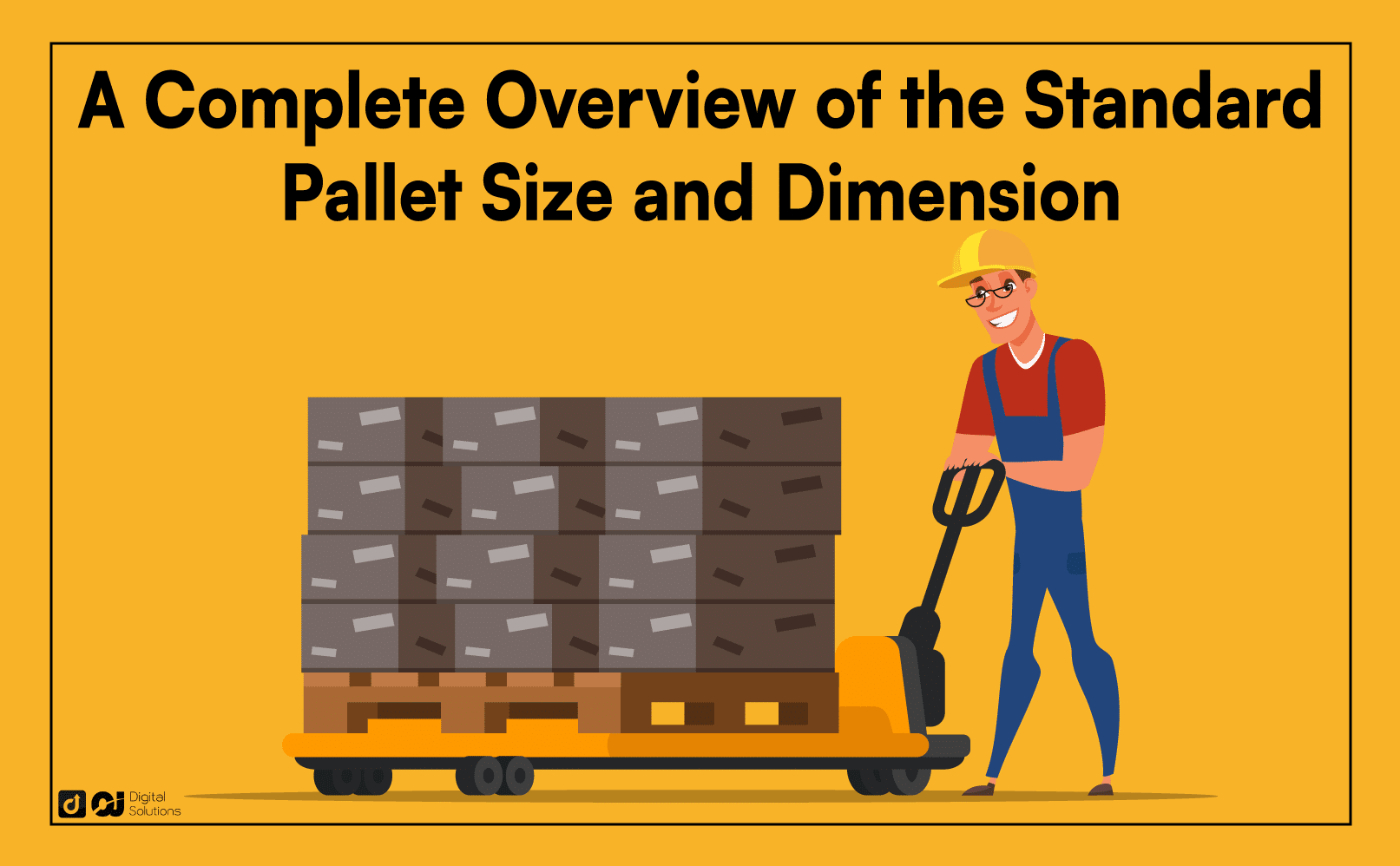Pallets are common in logistics, serving a crucial role in the safe and efficient transportation of goods.
Understanding the measurements of a pallet can help you decide the best type to use.
What is a standard pallet size? Which one should you use?
The standard pallet sizes depend on several factors, such as:
Your industry
Your location
The type of goods
In this guide, I’ll discuss the most common sizes, different types, and a brief history of pallets.
Let’s begin.
What Are Pallets?

Pallets, also called skids, are flat transport structures that support freight and goods. People use them to carry heavy and bulky items easily with a forklift, liftgate, pallet jack, or front loader.
They come in different materials, such as:
Wooden pallets
Plastic pallets
How long and how wide are pallets? The average pallet size is 48″ x 40″ (W x L).
However, there are other variations. We’ll look at these variations in more detail later in this guide.
Types of Pallets Based on Function
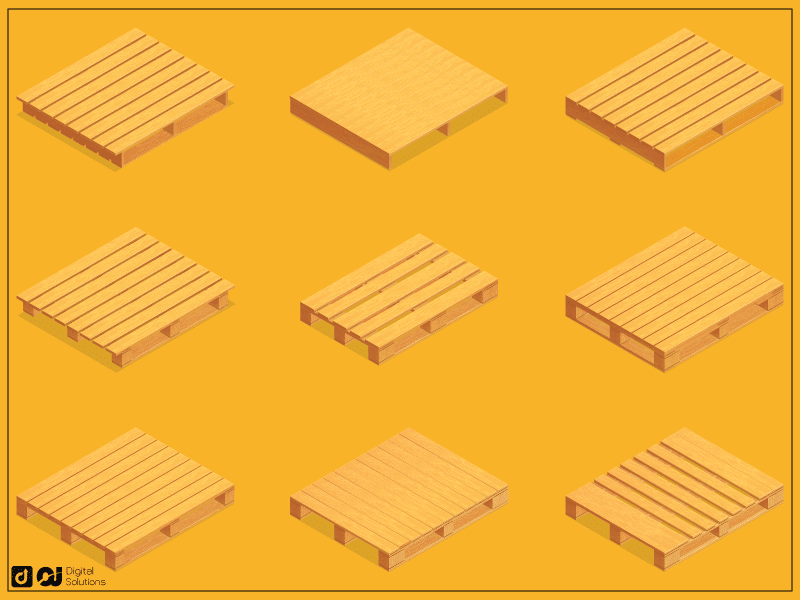
These are some of the most common types of pallets and their purposes.
Block Pallets
Block pallets use cylindrical posts to stabilize the deck of the pallet. A block pallet can be a four-way entry pallet.Solid Deck Pallets
Solid deck pallets have a solid wood sheet on their top surfaces. Other types normally have a series of planks with spaces.Stringer Pallets
These have stringers or boards that add load support. Forklifts can enter a stringer pallet from two sides if it has a two-way design. Like a block pallet, a stringer pallet can also have a four-way design.Double Face Pallet
This type has two top sides, which you can use alternately. The bottom face also adds to the strength of the pallet.Double Wing Pallet
This type has deck boards that extend beyond the stringers, which appear like wings.Legger Pallet
Designed for single-use, this type is a non-reversible pallet with no perimeter base.CP Pallets
A CP pallet is a heavy-duty pallet. Its original purpose is for transporting goods in the chemical industry. Today, various other industries use it, as well. A certain type of this pallet is CP8, which has a hole in the middle for a bulk bag discharge.
Why Companies Ship with Pallets
Logistics and shipping companies use flat pallets for two reasons: their function and their cost.
Pallets serve as a stable foundation for the unit load. They allow efficient and safe goods movement around a cargo area, warehouse, or loading bay.
Pallets are cost-effective. Most pallets are wooden pallets, which are low-cost and sturdy. Some companies also use plastic pallets. In general, these structures allow businesses to maximize truck space for more savings.
A Brief History of Standard Pallet Sizes in the United States
Pallets in the past referred to any wooden slab that can help effectively transport goods. The design evolved, but the forklift’s invention in 1915 is what led to the standard version of the common pallets employed today.
Howard T. Hallowell created the patent and called it the Lift-Truck Platform. It allowed forklifts to raise and carry them easily.

However, pallets manufactured didn’t have standard sizing. The length and width of a pallet varied. Some were too small or too large for the forklifts.
George G. Raymond, the founder of the Raymond Handling Concepts Corporation, filed a patent in 1939. The new design paved way to standardizing pallet measurements.
World War II further led to the design enhancements. Afterward, pallets became common in the shipping industry.
During the 50s to 60s, several groups and organizations developed their own standard wood pallet size. Here are some examples.
Euro pallets
European railway companies developed the first European dimensional and quality standards.GMA pallets
Consumer Brands Association (CBA), formerly Grocery Manufacturers Association (GMA), designed a standard pallet dimension of 48 x 40 inches for the nationwide distribution of goods.ISO pallets
The International Organization for Standardization also developed a standard ISO pallet list. Most wood pallets produced follow these measurements.

What Is the Standard Pallet Size?
What is the size of a standard pallet?
New wood pallets typically follow the standard GMA pallet dimensions.
The most common dimensions of a wood pallet today are 48 x 40 inches. The height of standard pallet pieces is around 6.5 inch.
The standard pallet size in feet is about 4 x 3.33 feet.
However, standard pallet sizes vary considerably worldwide.
Let’s take a closer look at standard pallet sizes.
ISO Standard Pallet Size Chart
The ISO has six pallet dimensions used in many parts of the world.
Here’s an ISO pallets dimensions table.
Region | Pallet Dimensions (Inches) |
|---|---|
North America | 48.00 x 40.00 |
Europe | 47.20 x 31.50 |
Australia | 45.90 x 45.90 |
Asia | 43.30 x 43.30 |
North America, Europe, Asia | 42.00 x 42.00 |
Europe, Asia | 47.24 x 39.37 |
Standard Pallet Sizes per Region

Pallets vary in size and dimensions across different regions. Some follow ISO pallet sizes standards, while other’s dont.
1 – America
The standard American pallet size follows the GMA standards of 48 x 40 inches, which fit well with most forklifts, pallet jacks, and other loading equipment.
Here are some other common US pallet size standards.
42 x 42 inches: used for goods like paint
48 x 48 inches: for transporting larger shipments
48 x 20 inches: half pallets for the retail industry
You might also see other measurements, especially for automotive pallets. Here are a couple of examples:
Mexico automotive half pallet: 39.37 x 23.62 inches
Argentina automotive pallet: 48.90 x 45.87 inches
2 – Australia
The standard pallet dims in Australia are around 45.90 x 45.90 inches.
In New Zealand, pallet mercosur is the standard. It has dimensions of 1200 x 1000 mm (47.24 x 39.37 inches).
3 – Europe
How big is a pallet in Europe?
Here are the European standard pallets sizing.
EUR pallet dimensions: 47.2 x 31.5 x 5.7 inches (1200 x 800 x 144 mm)
Switzerland plastic pallet size: 47.2 x 31.5 x 5.7 inches (1200 x 800 x 144 mm)
UK (New Zealand wooden pallet size): 47.24 x 39.37 x 5.7 inches (1200 x 800 x 144 mm)
American pallet size: 48 x 40 pallet dimensions (1219 x 1016 mm)
EUR-6 (half pallet): 24 x 31 inches (600 × 800 mm)
4 – Asia
The most common pallet sizes in Asia follow ISO standard pallet dimensions:
Japan and China wooden pallet size: 43.30 x 43.30 inches
India wooden pallet size: 47.24 x 39.37 inches
China timber half pallet size: 47.24 x 20 inches
5 –South Africa
The typical pallet dimensions (W x L) you’ll see in Africa are:
South Africa wooden pallet: 47.24 x 31.5 inches
South Africa plastic pallet: 47.24 x 39.37 inches
South Africa bearer pallet: 47.24 x 47.24 inches
Why Are Standard Pallet Sizes Important?
Standard pallet sizes make it easier to ship and handle freight in different locations. It creates predictability and eliminates many disruptions when reboarding products to local pallets.
With standard pallet dimensions, supply chain professionals can streamline the transportation of goods.
Multiple sizes would lead to incompatibilities, slowing down the supply chain.
Industries That Use Standardized Pallet Sizes
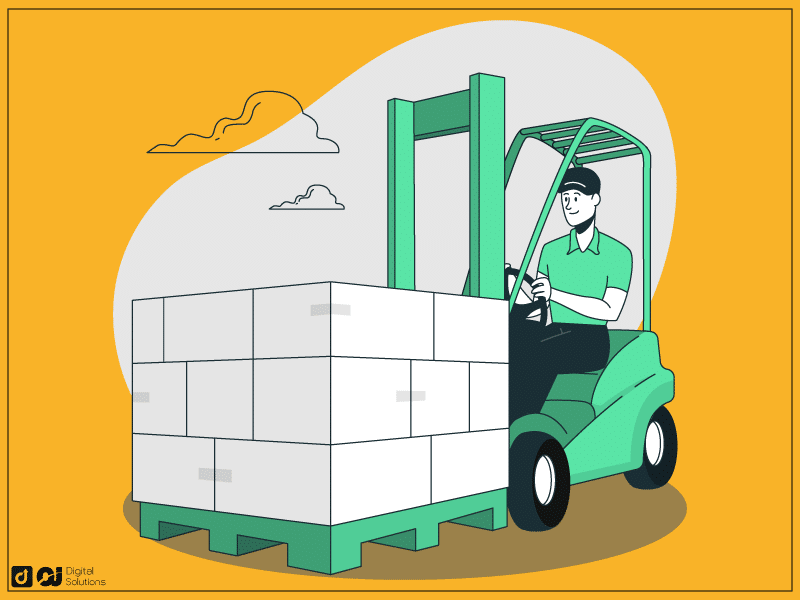
Any logistics, warehousing, or delivery industry use pallets. Here are some of the most common ones.
Warehousing and Logistics
Manufacturing
Retail and Supermarkets
Agriculture and Farming
Construction
Pharmaceuticals and Healthcare
Food and Beverage
Chemical and Petrochemical
E-commerce and Fulfillment Centers
Recycling and Waste Management
Applications Where Standard-Sized Pallets Don’t Make Sense
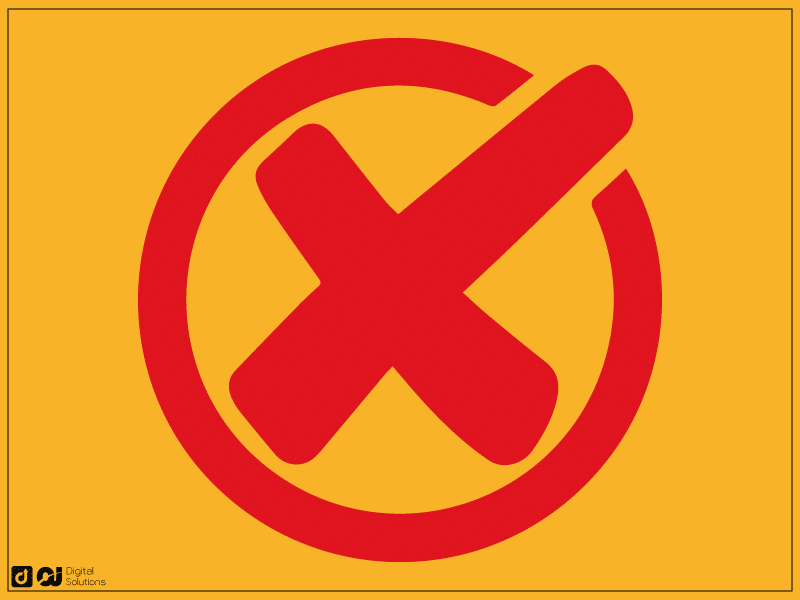
Some applications can’t benefit from standard pallet sizes. If your business has special requirements, you can order custom pallets to handle your specific load capacity and product type.
Consider the following:
Weight and size of your freight
Mode of transportation
Storage requirements
Recycling plans
Frequently Asked Questions (FAQs)
What Is the Most Common Pallet Type?
The stringer pallet is the most common type, especially in the United States. Its popularity stems from its versatility and widespread adoption within various industries nationwide.
How Do I Find Free Wood Pallets?
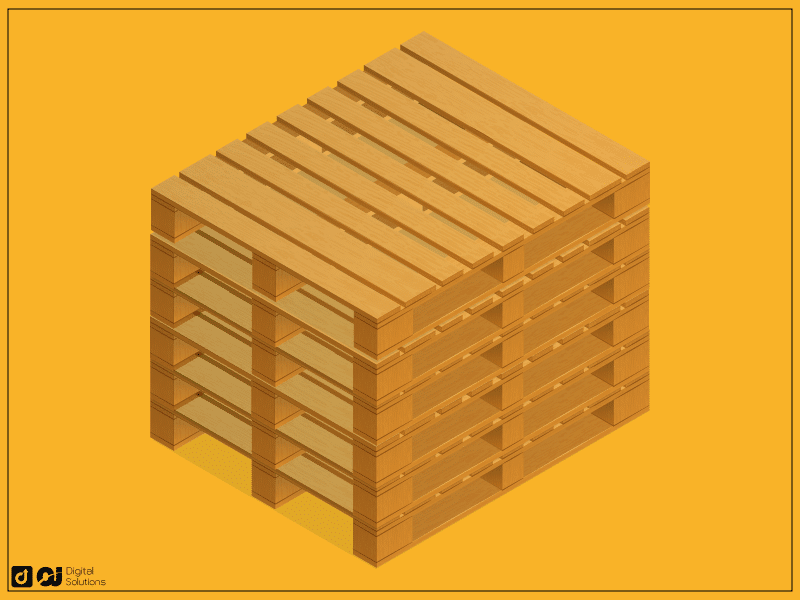
You can contact builders or contact construction site managers to see if they have pallets for disposal. Some warehouses or transportation hubs could also let go of some pallets.
What Are the Common Uses for 48 x 40-inch Pallets in North America?
Moving and storing goods in warehouses and distribution centers
Displaying and transporting goods in grocery stores
Holding and transporting construction materials and equipment
Transporting parts or finished products within a factory
Storing items on shelving units
Are Pallets Safe To Use?

Pallets might come with risks, and some aren’t appropriate for reusing. Follow these tips when taking used pallets.
Look for any signs of damage, such as broken or cracked boards, protruding nails, or splintered wood.
Check for any signs of pests.
Don’t use a pallet with a strong chemical odor. Chemically-treated pallets release toxic fumes.
Stick to natural pallets, and avoid colored ones.
Use heat-treated pallets, which don’t carry toxic chemical fumes.
Avoid pallets with signs of spills or stains.
If you’re not sure where a pallet came from, it’s safer to avoid using it.
What Does Palletizing Mean?
Palletizing refers to loading and unloading goods onto a pallet. The palletizing process also includes wrapping, strapping, or other means to ensure the shipment’s stability during transport.
The Bottom Line
I hope this guide can help you streamline your transportation processes.
Understanding standard pallet sizes and dimensions is vital for shipping and logistics businesses. Some benefits include positive impacts on supply chain efficiency, cost savings, and smaller environmental footprint.
Which type and size is perfect for your business?

